Autonomous Fuzzy Controller Design for the Utilization of Hybrid PV-Wind Energy Resources in Demand Side Management Environment
Abstract
:1. Introduction
Research Gaps
- To optimize the usage of renewable power on its incidence with the designed smart fuzzy controller.
- To forecast the energy cost based on the present value cost of energy.
- To meet the energy demand of the consumers using RES effectively without energy storage devices.
2. Design of Virtual Model for the Proposed System
2.1. Design of Virtual VAWT Model
2.2. Design of Virtual PV Module
2.3. Proposed Autonomous Fuzzy Controller (AuFuCo)
- Virtual Source Model: Wind and PV power resources are designed with their characteristic equations as a virtual model for a rated capacity of 2 kW each and a total capacity of 4 kW. This model is constructed using Simulink and can be easily tunable with input side variations like wind speed and solar irradiance parameters which reflect on the output power.
- Forecasting System (FS): It is constructed with a fuzzy inference system (FIS) for predicting the load demand variations based upon electricity tariff, time of consumption, and ambient temperature.
- Grid Power Selection (GPS) Switch: This component plays an important role in the selection of energy resources for different load conditions at different times and is constructed using a fuzzy inference system. This fuzzy system effectively decides and manages the amount of grid power needed, considering the availability of renewable energy sources on its incidence at all times.
- Demand Response System (DRS): This unit considers consumption time, comfort level, temperature variations, and energy consumption by sacrificing a little amount of comfort level to calculate the running load in the system.
- REMS: The main purpose of this system is to supply as much renewable energy to different categories of loads available on the domestic consumption side.
- Fuzzy Load Switch (FLS): This is an intelligent power switch, which enables us to classify different loads to consume power according to the availability of renewable energy sources on the generation side. The loads are classified into four important categories to illustrate the renewable energy impact on demand-side management [40].
- ○
- Baseline load: It may be activated at any time or maybe in standby mode to consume the electricity. Example: TV, fan, refrigerator, computer and lighting loads.
- ○
- Priority load: It may consume power for a longer time but it can be interrupted for modifying the consumption pattern. Example: air conditioners, heating, and ventilation systems.
- ○
- Burst or short term loading: Appliances that consume energy in a single stretch called burst loads. Example: mixers and other cooking appliances
- ○
- Schedulable load: Appliances that consume power in a flexible mode. Example: washing machines, wet grinders or pump motors.
3. Methodology
3.1. Introduction to Fuzzy System
3.2. Fuzzy Inference Systems Used in the Controller
3.2.1. Forecasting System (FS)
3.2.2. Grid Power Selection (GPS) Switch
3.2.3. Renewable Energy Management System (REMS)
3.2.4. Fuzzy Load Switch (FLS)
4. Results and Discussion
- The main goal of this analysis is to utilize the hybrid wind and solar energy on its incidence (any time in 24 h) for the maximum possible connected load with grid support through a proposed autonomous (mode) controller and aims to reduce the dependency on the grid.
- This work is carried out without battery storage support with a high-efficiency inverter configuration (98% percentage of efficiency) but its effect is not considered for output results.
- Hybrid energy resources are capable of delivering a rated power to a 4 kW connected load.
- To reduce the peak demand on the grid, a schedulable load is proposed and it consumes energy in the presence of maximum renewable energy incidences.
4.1. Analysis of Different Combinations of Hybrid Renewable Energy with Grid Supply
4.2. Analysis of Energy and Cost Savings Based on Home Environment Energy Tariff
4.3. Effect of Energy Conversion on DSM Technique
4.4. Effect of Hybridization on Demand-Side by 2030
5. Conclusions
Author Contributions
Funding
Conflicts of Interest
Abbreviations and Symbols
| VAWT | Vertical axis wind turbine |
| HAWT | Horizontal axis wind turbine |
| PV | Photovoltaic |
| REMS | Renewable energy management system |
| RE | Renewable energy |
| HIHREM | Home renewable energy management system |
| HOMER | Hybrid Optimization Model for Electric Renewable |
| HVAC | Heating, Ventilating and Air conditioning |
| DRS | Demand response system |
| DSM | Demand side management |
| AuFuCo | Autonomous Fuzzy Controller |
| SFLC | Smart Fuzzy Logic Controller |
| EMS | Energy management system |
| EPSR | Electric power survey report |
| IEA | International energy agency |
| LF | Load forecasting |
| MAS | Multi-Agent System |
| ABC | Artificial bee colony |
| STC | Standard test condition |
| GH | Grid power high |
| GL | Grid power low |
| GM | Grid power medium |
| GPS | Grid power selection |
| GVH | Grid power very high |
| GVL | Grid power very low |
| COG | Center of gravity |
| Egrid,t | Energy supplied by the grid |
| EtR | Energy request by the consumer at time t |
| EPV,t | Energy supplied by the PV panel at time t |
| Etcost | Total energy cost |
| Ewind,t | Energy supplied by the wind VAWT model at time t |
| m | Number of rules applied to the controller |
| Np | No of PV panels in parallel |
| Ns | No of PV panels in series |
| Pm | Mechanical output power of the turbine |
| Rp | Parallel resistance |
| Rs | Series resistance |
| Top | Cell operating temperature |
| Tref | Cell temperature at 25 °C |
| TOEprice,t | Energy cost at time t |
| SGDMS | Smart Grid Distribution Management System |
| TERI | The Energy and Resources Institute |
References
- Elavarasan, R.M.; Selvamanohar, L.; Raju, K.; Vijayaraghavan, R.R.; Subburaj, R.; Nurunnabi, M.; Khan, I.A.; Afridhis, S.; Hariharan, A.; Pugazhendhi, R.; et al. A Holistic Review of the Present and Future Drivers of the Renewable Energy Mix in Maharashtra, State of India. Sustainability 2020, 12, 6596. [Google Scholar] [CrossRef]
- Krishnamoorthy, R.; Udhayakumar, K.; Kannadasan, R.; Elavarasan, R.M.; Mihet-Popa, L. An Assessment of Onshore and Offshore Wind Energy Potential in India Using Moth Flame Optimization. Energies 2020, 13, 3063. [Google Scholar]
- Yang, J.; Urpelainen, J. The future of India’s coal fired power generation capacity. J. Clean. Prod. 2019, 226, 904–912. [Google Scholar] [CrossRef]
- Dubash, N.K.; Khosla, R.; Rao, N.D.; Bhardwaj, A. Corrigendum: India’s energy and emissions future: An interpretive analysis of model scenarios (2018 Environ. Res. Lett. 13 074018). Environ. Res. Lett. 2018, 13, 089501. [Google Scholar] [CrossRef]
- Report. Accelerating India’s Transition to Renewables: Results from the ETC India Project. 2017. Available online: https://www.teriin.org/sites/default/files/files/etc-key-messages-summary.pdf (accessed on 12 March 2021).
- Guttikunda, S.K.; Jawahar, P. Atmospheric emissions and pollution from the coal-fired thermal power plants in India. Atmos. Environ. 2014, 92, 449–460. [Google Scholar] [CrossRef]
- Madhu, S.; Payal, S. A Review of Wind Energy Scenario in India. Int. Res. J. Environ. Sci. 2014, 3, 87–92. [Google Scholar]
- Remap 2030 Renewable Energy Prospects for Poland. 2015. Available online: https://www.irena.org/-/media/Files/IRENA/Agency/Publication/2015/IRENA_REmap_Poland_paper_2015_EN.pdf (accessed on 21 March 2021).
- Lu, X.; McElroy, M.B. Global Potential for Wind-Generated Electricity. Wind Energy Eng. A Handb. Onshore Offshore Wind Turbines. 2017, 106, 51–73. [Google Scholar]
- Venkatesan, C.; Kannadasan, R.; Alsharif, M.H.; Kim, M.-K.; Nebhen, J. A Novel Multiobjective Hybrid Technique for Siting and Sizing of Distributed Generation and Capacitor Banks in Radial Distribution Systems. Sustainability 2021, 13, 3308. [Google Scholar] [CrossRef]
- Venkatesan, C.; Kannadasan, R.; Alsharif, M.H.; Kim, M.-K.; Nebhen, J. Assessment and Integration of Renewable. Energy Resources Installations with Reactive Power Compensator in Indian Utility Power System Network. Electronics 2021, 10, 912. [Google Scholar] [CrossRef]
- Apelfröjd, S.; Eriksson, S.; Bernhoff, H. A Review of Research on Large Scale Modern Vertical Axis Wind Turbines at Uppsala University. Energies 2016, 9, 570. [Google Scholar] [CrossRef] [Green Version]
- Niranjana, S.J. Power Generation by Vertical Axis Wind Turbine. Int. J. Emerg. Res. Manag. Technol. 2015, 2, 1–7. [Google Scholar]
- Chong, W.T.; Fazlizan, A.; Poh, S.C.; Pan, K.C.; Hew, W.P.; Hsiao, F.B. The design, simulation and testing of an urban vertical axis wind turbine with the omni-direction-guide-vane. Appl. Energy 2013, 112, 601–609. [Google Scholar] [CrossRef]
- Anthony, M.; Prasad, V.; Raju, K.; Alsharif, M.H.; Geem, Z.W.; Hong, J. Design of Rotor Blades for Vertical Axis Wind Turbine with Wind Flow Modifier for Low Wind Profile Areas. Sustainability 2020, 12, 8050. [Google Scholar] [CrossRef]
- Mohanasundaram, A.; Valsalal, P. Analysis and Design of a Giromill Type Vertical Axis Wind Turbine for a Low Wind ProfileUrbanArea. J. Electr. Eng. 2020, 20, 363–375. [Google Scholar]
- The Future of Cooling, Opportunities for Energy-Efficient Air Conditioning. 2018. Available online: https://www.iea.org/reports/the-future-of-cooling (accessed on 12 March 2021).
- Xu, L.; Wang, Z.; Liu, Y.; Xing, L. Energy allocation strategy based on fuzzy control considering optimal decision boundaries of standalone hybrid energy systems. J. Clean. Prod. 2021, 279, 123810. [Google Scholar]
- Loukil, K.; Abbes, H.; Abid, H.; Abid, M.; Toumi, A. Design and implementation of reconfigurable MPPT fuzzy controller for photovoltaic systems. Ain Shams Eng. J. 2020, 11, 319–328. [Google Scholar] [CrossRef]
- Jeong, J.S.; Ramírez-Gómez, Á. Optimizing the location of a biomass plant with a fuzzy-DEcision-MAking Trial and Evaluation Laboratory (F-DEMATEL) and multi-criteria spatial decision assessment for renewable energy management and long-term sustainability. J. Clean. Prod. 2018, 182, 509–520. [Google Scholar] [CrossRef]
- Ma, Y.; Li, B. Hybridized Intelligent Home Renewable Energy Management System for Smart Grids. Sustainability 2020, 12, 2117. [Google Scholar] [CrossRef] [Green Version]
- Priyadharshini, B.; Ganapathy, V.; Sudhakara, P. An Optimal Model to Meet the Hourly Peak Demands of a Specific Region With Solar, Wind, and Grid Supplies. IEEE Access 2020, 8, 13179–13194. [Google Scholar] [CrossRef]
- Deo, R.C.; Ghorbani, M.A.; Samadianfard, S.; Maraseni, T.; Bilgili, M.; Biazar, M. Multi-layer perceptron hybrid model integrated with the firefly optimizer algorithm for windspeed prediction of target site using a limited set of neighboring reference station data. Renew. Energy 2018, 116, 309–323. [Google Scholar] [CrossRef]
- Li, W.; Ng, C.; Logenthiran, T.; Phan, V.-T.; Woo, W.L. Smart Grid Distribution Management System (SGDMS) for Optimised Electricity Bills. J. Power Energy Eng. 2018, 6, 49–62. [Google Scholar] [CrossRef] [Green Version]
- Tischer, H.; Verbic, G. Towards a smart home energy management system—A dynamic programming approach. In Proceedings of the 2011 IEEE PES Innovative Smart Grid Technologies, Perth, WA, Australia, 13–16 November 2011; pp. 1–7. [Google Scholar]
- Zhang, Y.; Zeng, P.; Zang, C. Optimization algorithm for home energy management system based on artificial bee colony in smart grid. In Proceedings of the 2015 IEEE International Conference on Cyber Technology in Automation, Control, and Intelligent Systems (CYBER), Shenyang, China, 8–12 June 2015; pp. 734–740. [Google Scholar]
- Shahgoshtasbi, D.; Jamshidi, M.M. A new intelligent neuro-fuzzy paradigm for energy-efficient homes. IEEE Syst. J. 2014, 8, 664–673. [Google Scholar] [CrossRef]
- Kushiro, N.; Suzuki, S.; Nakata, M.; Takahara, H.; Inoue, M. Integrated residential gateway controller for home energy management system. IEEE Trans. Consum. Electron. 2003, 49, 629–636. [Google Scholar] [CrossRef]
- Gioutsos, D.M.; Blok, K.; van Velzen, L.; Moorman, S. Cost-optimal electricity systems with increasing renewable energy penetration for islands across the globe. Appl. Energy 2018, 226, 437–449. [Google Scholar] [CrossRef]
- Bissey, S.; Jacques, S.; le Bunetel, J.C. The fuzzy logic method to efficiently optimize electricity consumption in individual housing. Energies 2017, 10, 1701. [Google Scholar] [CrossRef] [Green Version]
- Keshtkar, A. Development of an Adaptive Fuzzy Logic System for Energy Management in Residential Buildings. Thesis Submitt. 2015. Available online: http://summit.sfu.ca/item/16759 (accessed on 26 August 2015).
- Rathaiah, M.; Reddy, P.R.K.K.; Sujatha, P. Adaptive Fuzzy Controller Design for Solar and Wind Based Hybrid System. Int. J. Eng. Technol. 2018, 7, 283. [Google Scholar] [CrossRef] [Green Version]
- Nema, P. Smart Controller for Standalone Hybrid Energy System in Mobile Telephony Industry. Int. J. Inf. Technol. Electr. Eng. Smart. 2016, 5, 57–64. [Google Scholar]
- Frunzulica, F.; Dumitrache, A.; Cismilianu, A.M. New Urban Vertical Axis Wind Turbine Design. Renew. Energy Power Qual. J. 2016, 7, 997–1001. [Google Scholar] [CrossRef]
- Tirkey, A.; Sarthi, Y.; Patel, K.; Sharma, R.; Sen, P.K.; Engg, M. No.81-(2014)-Study on the effect of blade profile, number of blades. Int. J. Sci. Eng. Technol. Res. 2014, 3, 3183–3187. [Google Scholar]
- Rathod, P.; Shah, K.; Desai, H.; Shah, J.; Professor, A. A Review on Combined Vertical Axis Wind Turbine. Int. J. Innov. Res. Sci. Eng. Technol. 2007, 3297, 5748–5754. [Google Scholar]
- Balaguru, V.S.S.; Swaroopan, N.J.; Raju, K.; Alsharif, M.H.; Kim, M.-K. Techno-Economic Investigation of Wind Energy Potential in Selected Sites with Uncertainty Factors. Sustainability 2021, 13, 2182. [Google Scholar] [CrossRef]
- Rezaeiha, A.; Kalkman, I.; Blocken, B. CFD simulation of a vertical axis wind turbine operating at a moderate tip speed ratio: Guidelines for minimum domain size and azimuthal increment. Renew. Energy 2017, 107, 373–385. [Google Scholar] [CrossRef] [Green Version]
- Pujol, T.; Massaguer, A.; Massaguer, E.; Montoro, L.; Comamala, M. Net power coefficient of vertical and horizontal wind turbines with crossflow runners. Energies 2018, 11, 110. [Google Scholar] [CrossRef] [Green Version]
- Photovoltaic Module HIT® VBHN330SA16/VBHN325SA16. 2019. Available online: https://www.solaris-shop.com/content/VBHN330SA16%20Specs.pdf (accessed on 12 March 2021).
- A Photovoltaic Panel Model in Matlab/Simulink. Available online: https://www.researchgate.net/publication/308173153_A_PHOTOVOLTAIC_PANEL_MODEL_IN_MATLABSIMULINK (accessed on 12 March 2021).
- Pukhrem, S. A Photovoltaic Panel Model in Matlab/Simulink; Wroclaw University of Technology: Wrocław, Poland, 2014. [Google Scholar] [CrossRef]
- Prakash, D.; Ravikumar, P. Transient Analysis of Heat Transfer Across the Residential Building Roof with Pcm and Wood Wool- A Case Study by Numerical Simulation Approach. Arch. Civ. Eng. 2013, 59, 483–497. [Google Scholar] [CrossRef]
- Tommaso, G. Demand Side Management in the Smart Grid a Direct Load Control Approach. Ph.D. Thesis, 2015. Available online: https://backend.orbit.dtu.dk/ws/files/137328321/PhD_Thesis_Costanzo.pdf (accessed on 12 March 2021).
- Khan, A. A Generic Demand Side Management ( G-DSM ) Model for Smart Grid MS. Electr. Eng. 2014, 39, 954–964. [Google Scholar]
- Keshtkar, A.; Arzanpour, S. A fuzzy logic system for demand-side load management in residential buildings. In Proceedings of the 2014 IEEE 27th Canadian Conference on Electrical and Computer Engineering (CCECE), Toronto, ON, Canada, 4–7 May 2014; pp. 1–5. [Google Scholar]
- Piyali, G.; Akhtar, K.; Aladin, Z. Short Term Load Forecasting Using Fuzzy Logic. In Proceedings of the Conference: International Conference on Research in Education and Science (ICRES), Ephesus-Kusadasi, Turkey, 18–21 May 2017. [Google Scholar]
- Taylor, E.L. Short-term Electrical Load Forecasting for an Institutional/Industrial Power System Using an Artificial Neural Network. 2013. Available online: https://trace.tennessee.edu/cgi/viewcontent.cgi?referer=&httpsredir=1&article=2753&context=utk_gradthes (accessed on 12 March 2021).
- Bae, S.; Kwasinski, A. Dynamic modeling and operation strategy for a microgrid with wind and photovoltaic resources. IEEE Trans. Smart Grid. 2012, 3, 1867–1876. [Google Scholar] [CrossRef]
- Šipoš, M.; Primorac, M.; Klaić, Z. Demand Side Management inside a Smart House. Int. J. Electr. 2015, 6, 45–50. [Google Scholar]
- Hemeida, A.; El-Ahmar, M.H.; El-Sayed, A.M.; Hasanien, H.M.; Alkhalaf, S.; Esmail, M.F.C.; Senjyu, T. Optimum design of hybrid wind/PV energy system for remote area. Ain Shams Eng. J. 2020, 11, 11–23. [Google Scholar] [CrossRef]
- Ataei, A.; Nedaei, M.; Rashidi, R.; Yoo, C. Optimum design of an off-grid hybrid renewable energy system for an office building. J. Renew. Sustain. Energy 2015, 7, 053123. [Google Scholar] [CrossRef]
- Subramanian, S.; Sankaralingam, C.; Elavarasan, R.M.; Vijayaraghavan, R.R.; Raju, K.; Mihet-Popa, L. An Evaluation on Wind Energy Potential Using Multi-Objective Optimization-Based Non-Dominated Sorting Genetic Algorithm III. Sustainability 2021, 13, 410. [Google Scholar] [CrossRef]
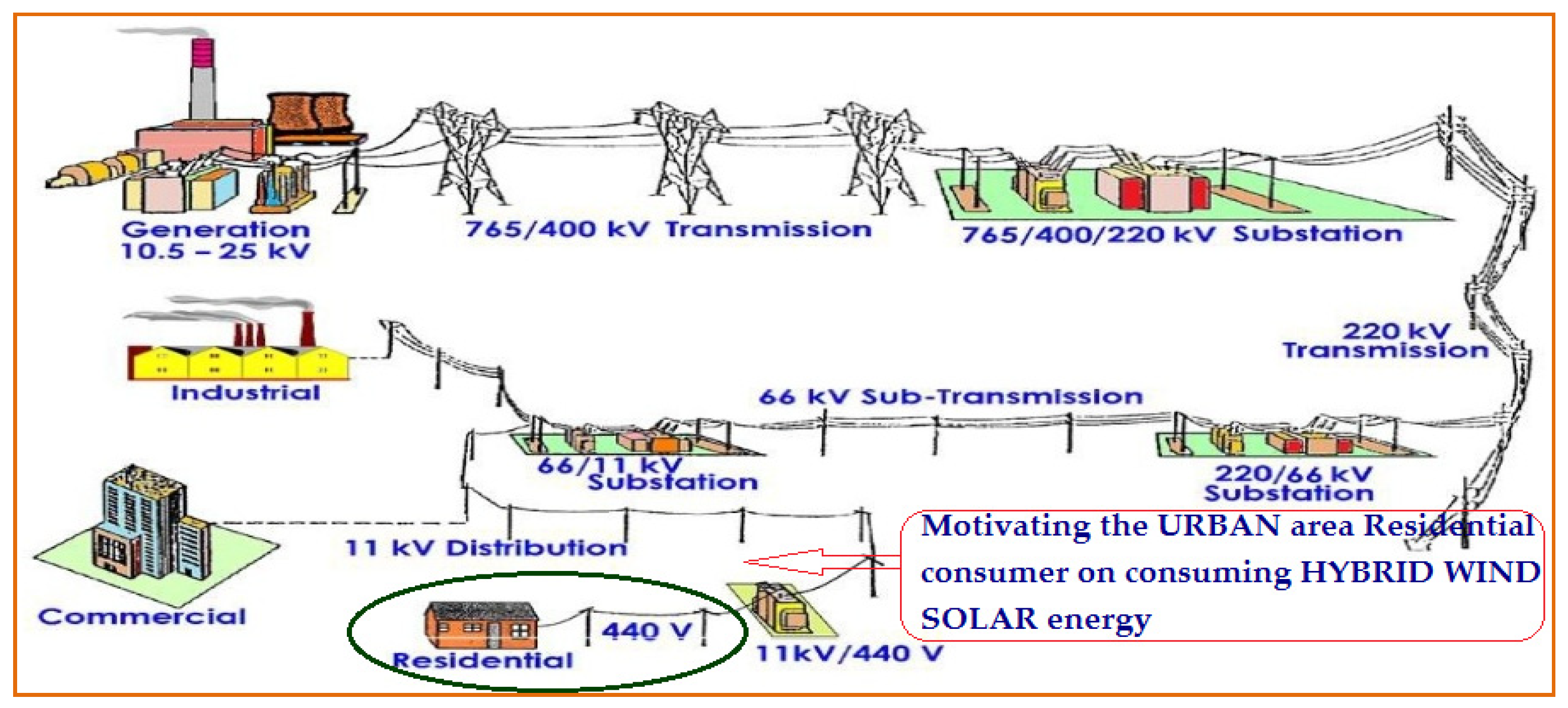


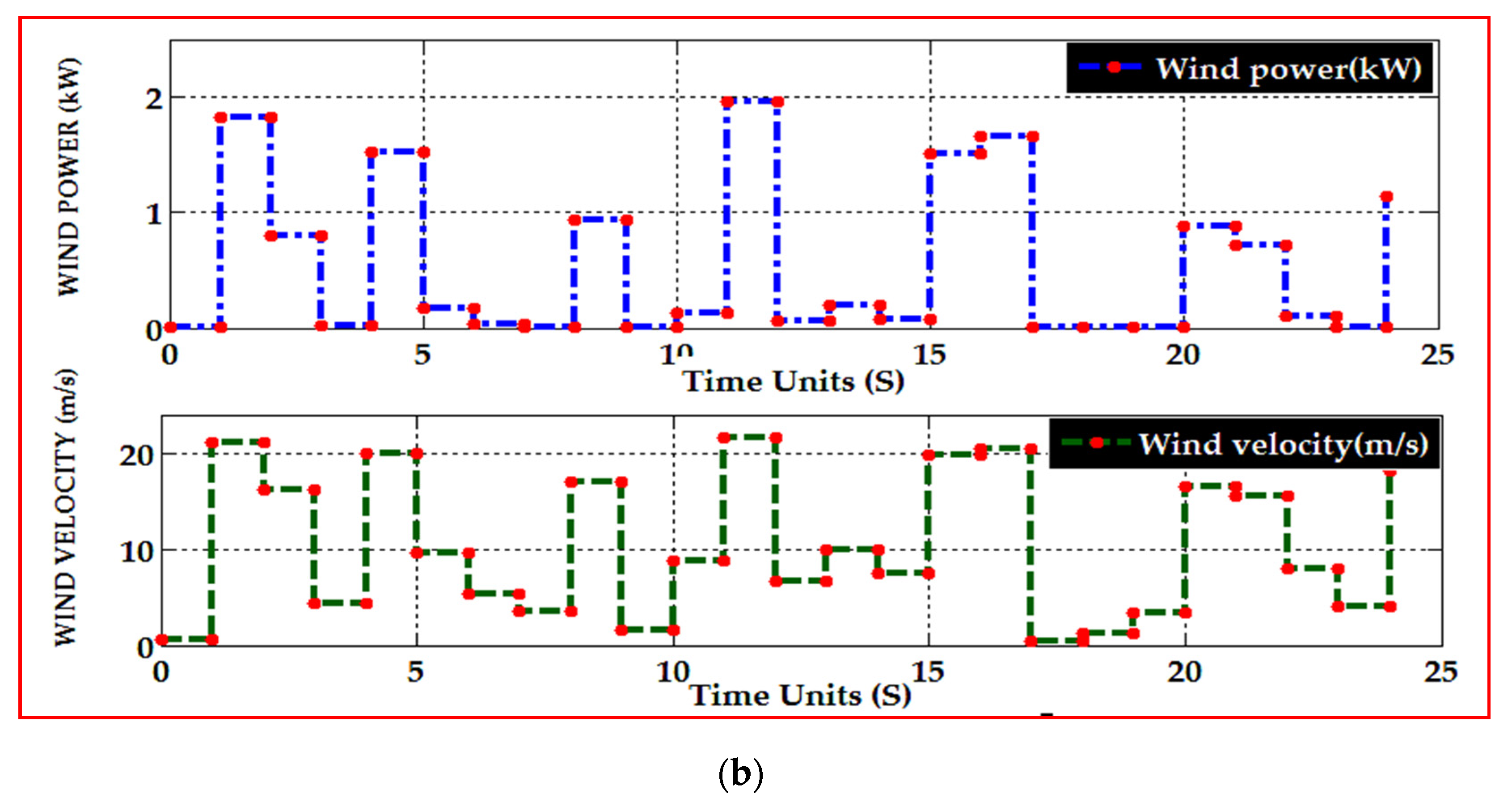


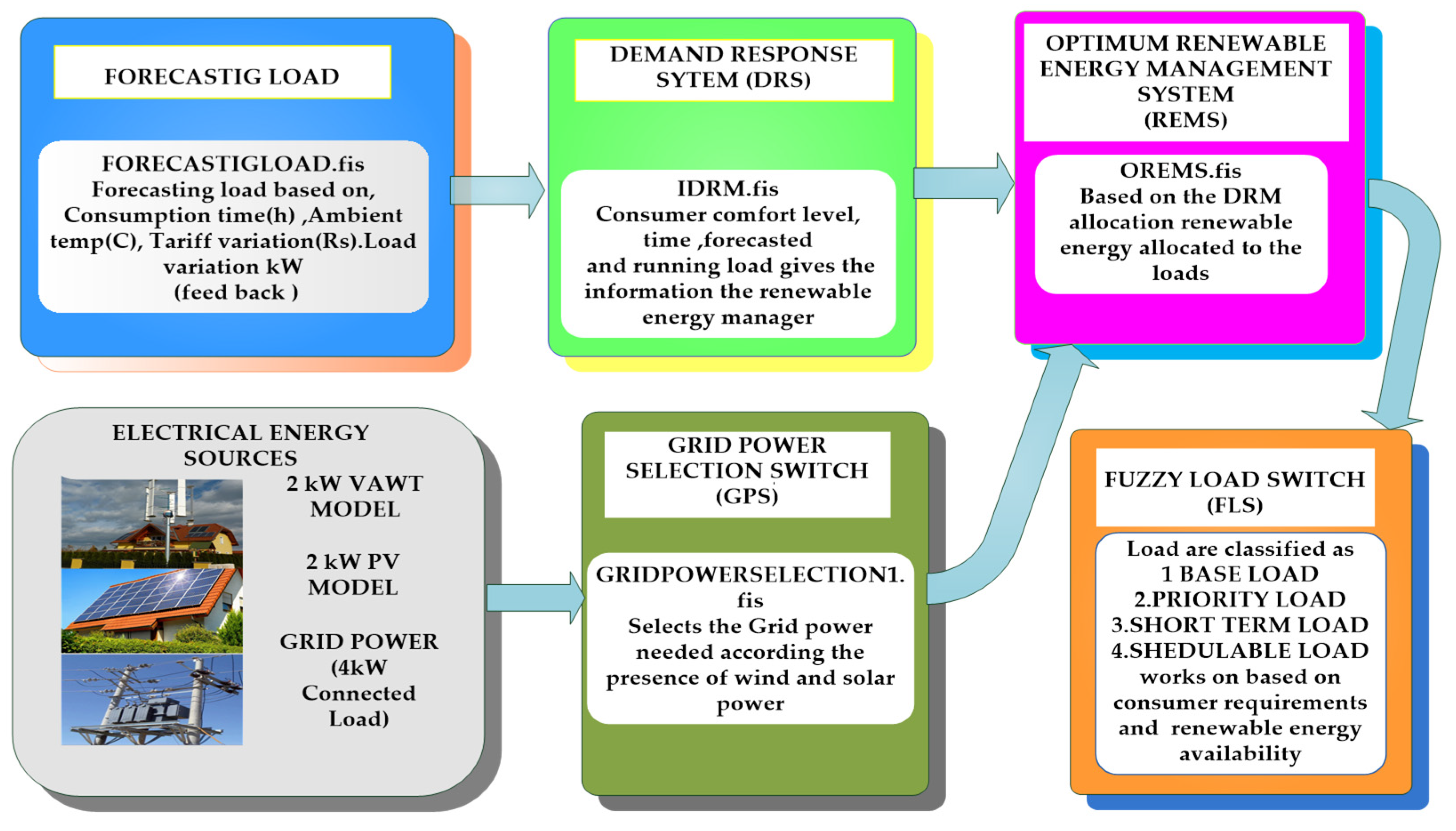

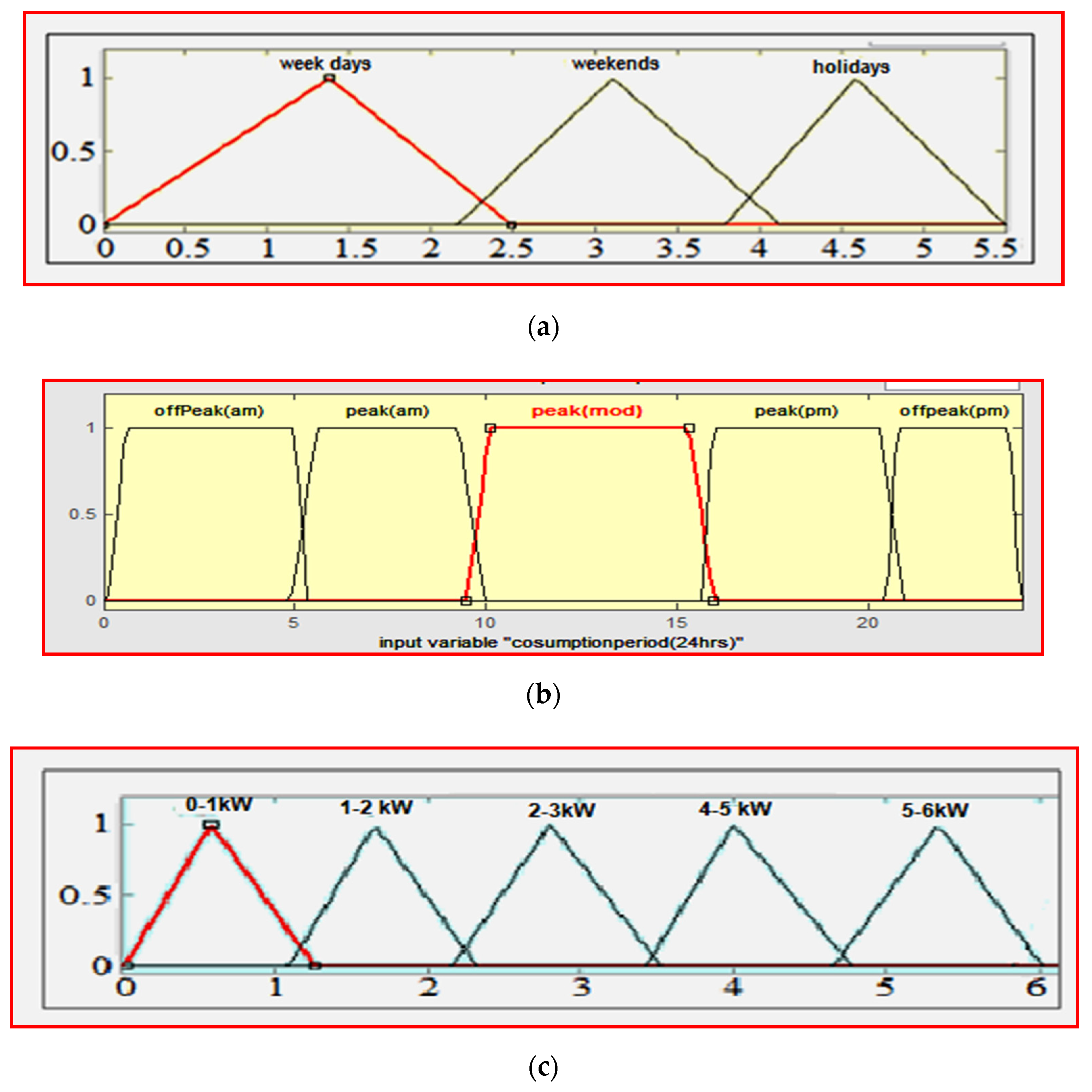
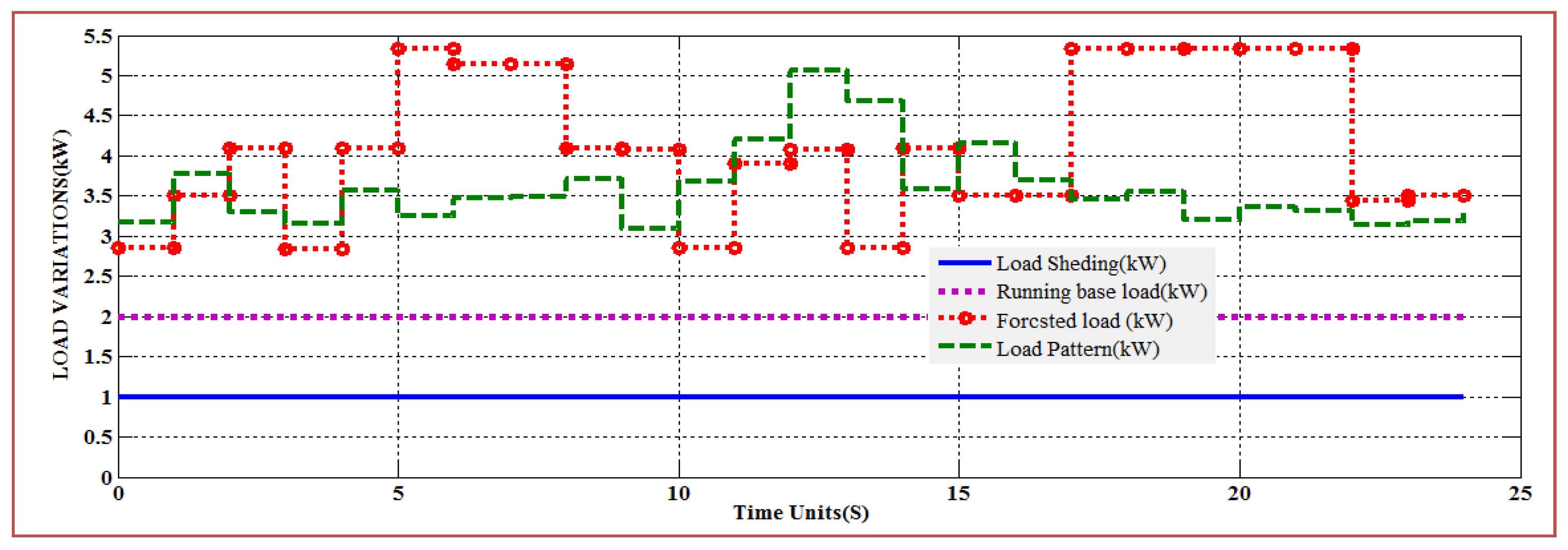

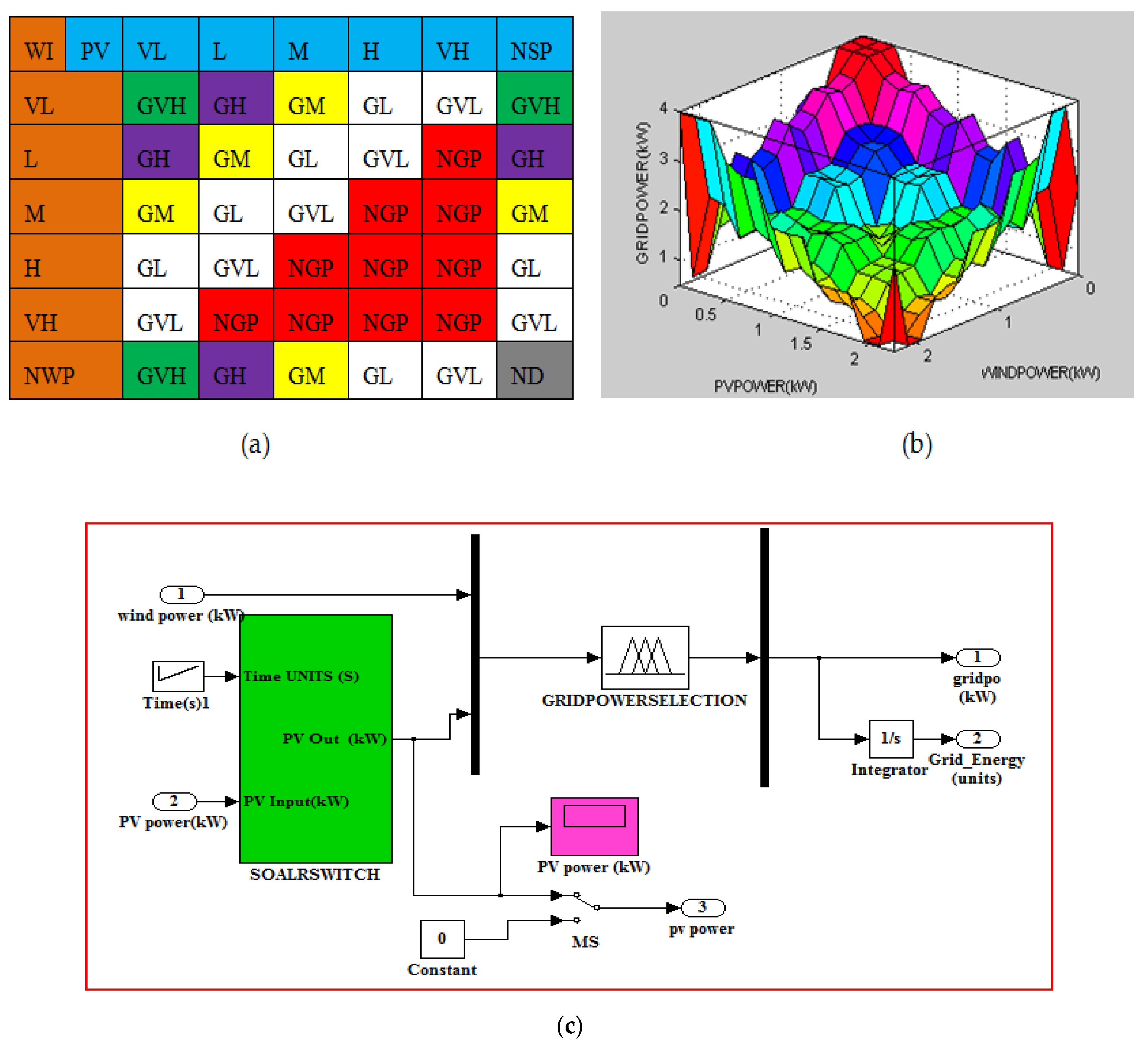






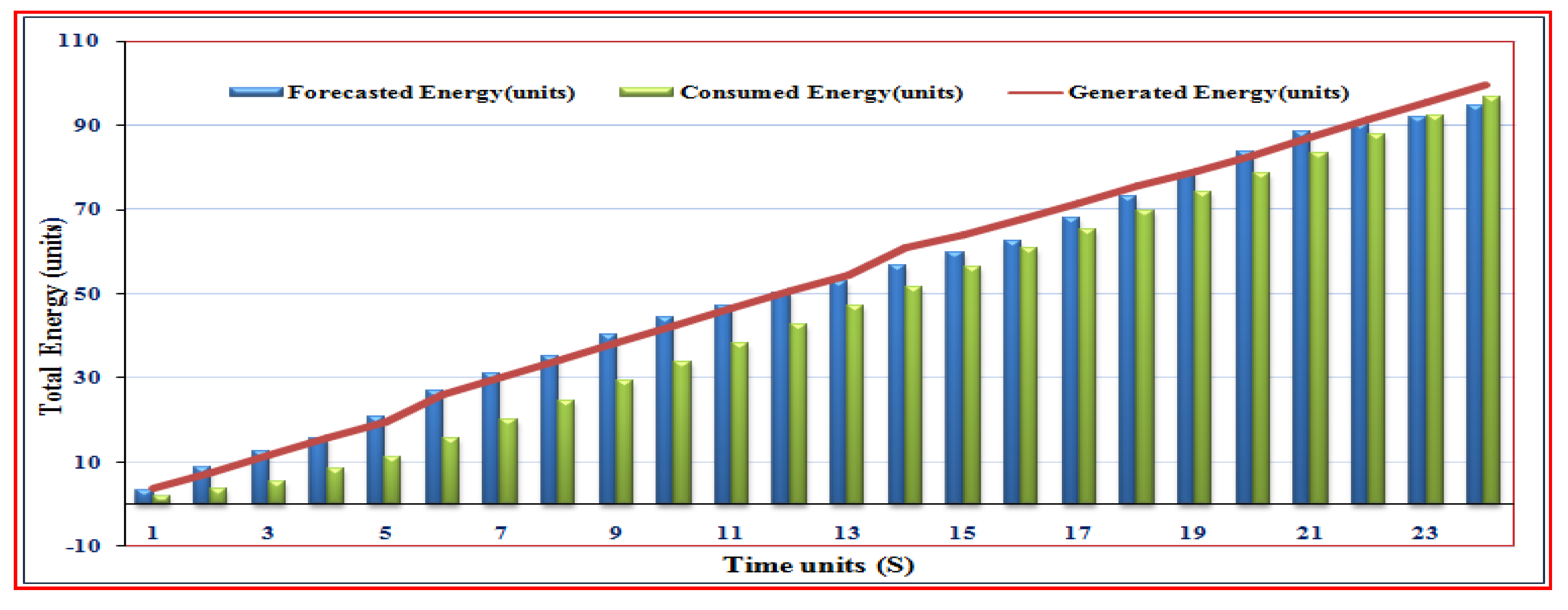

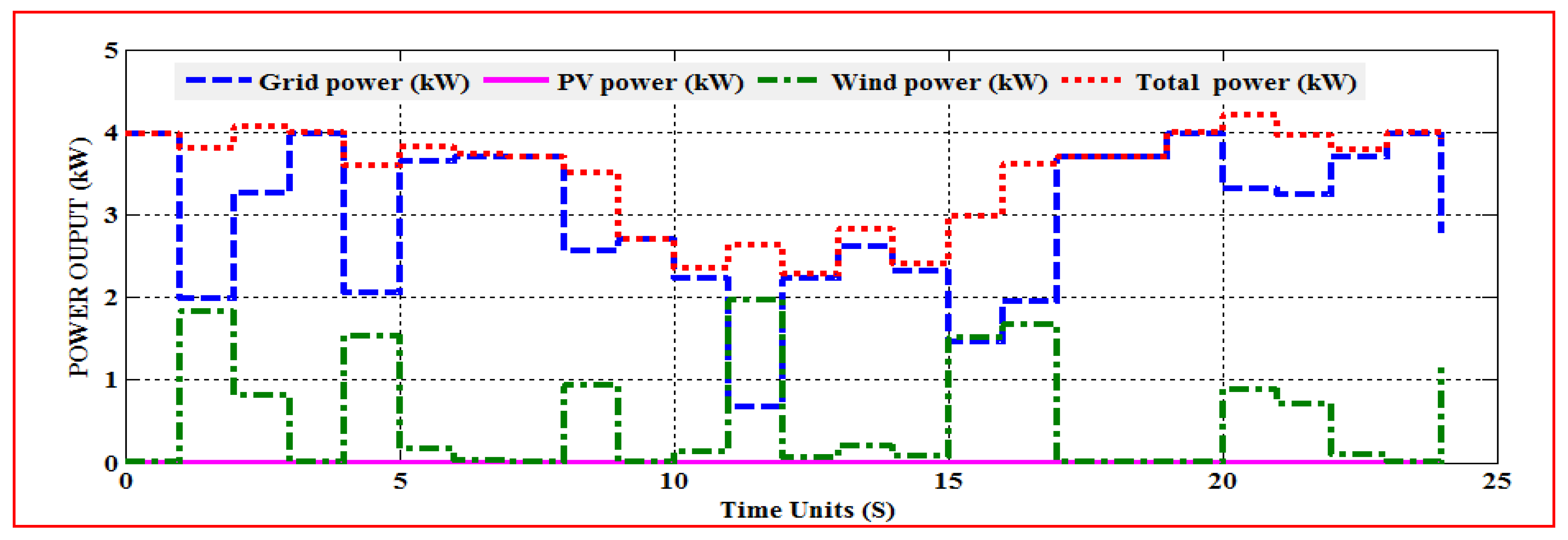
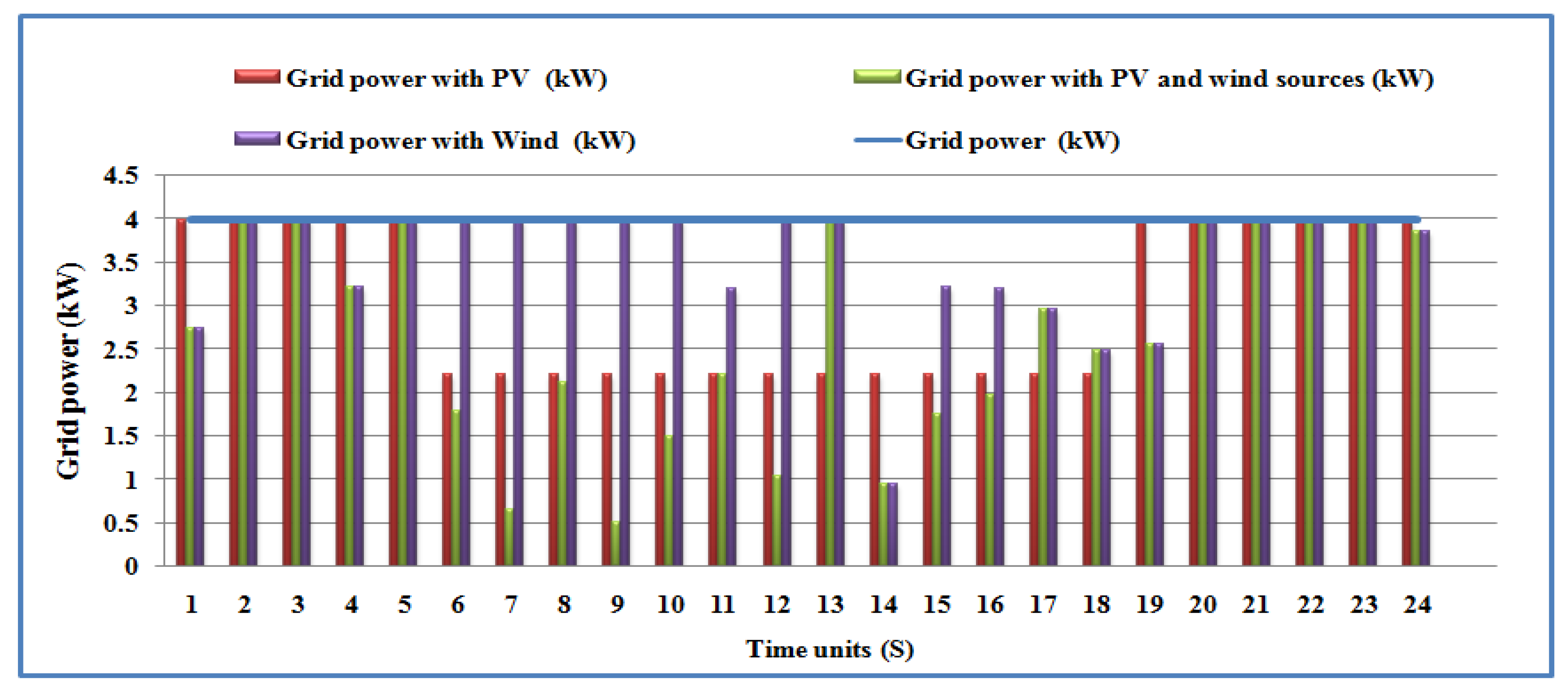
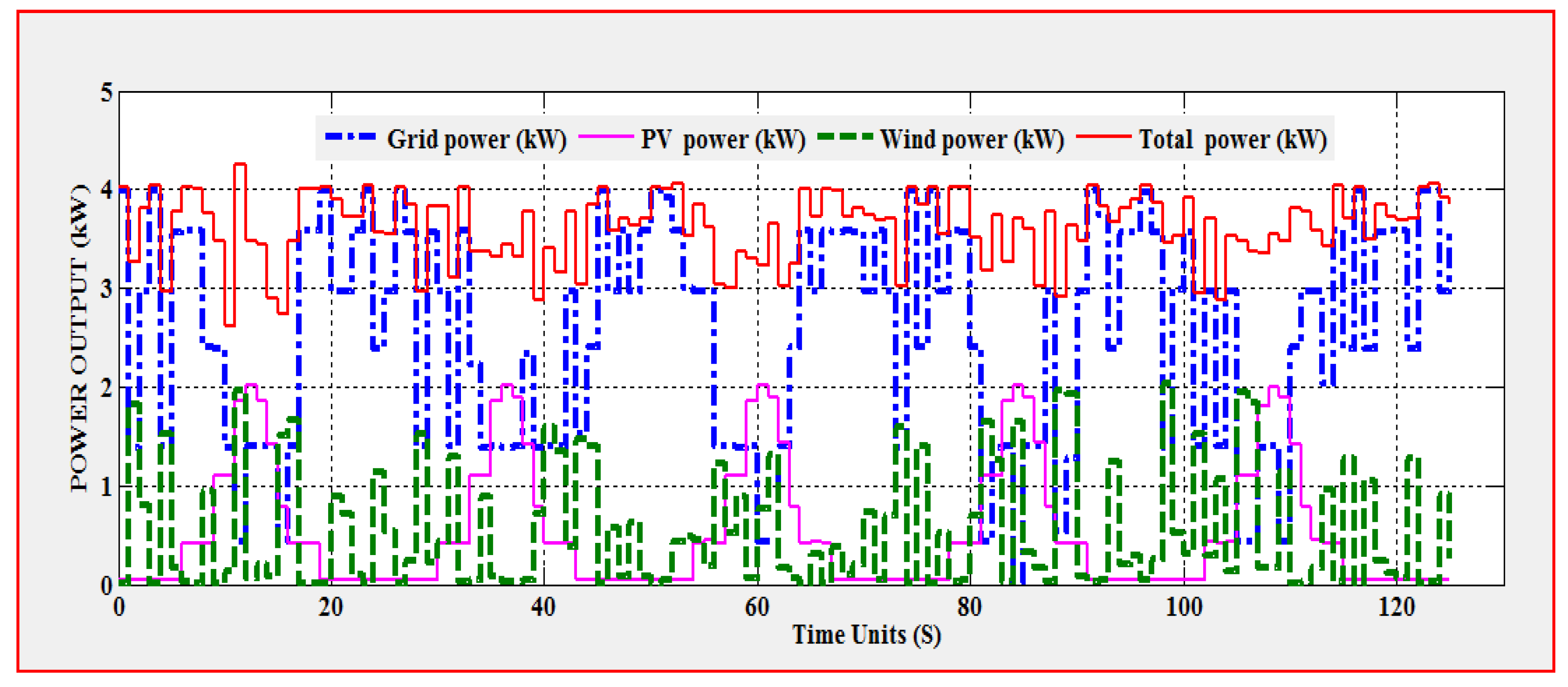
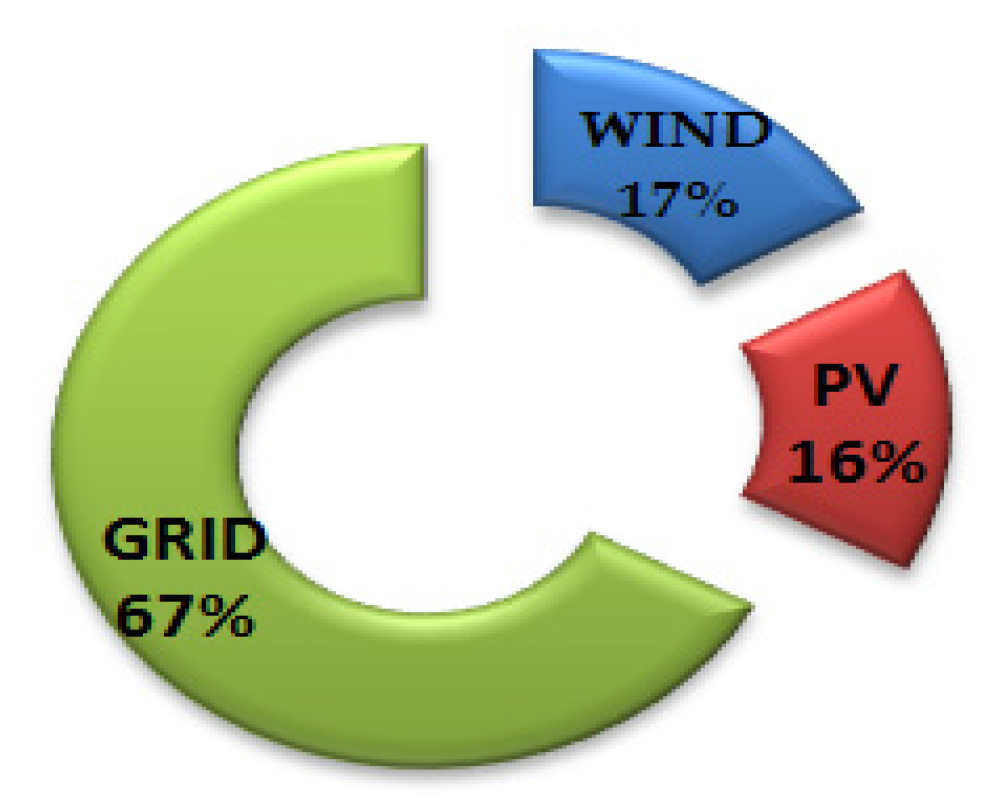
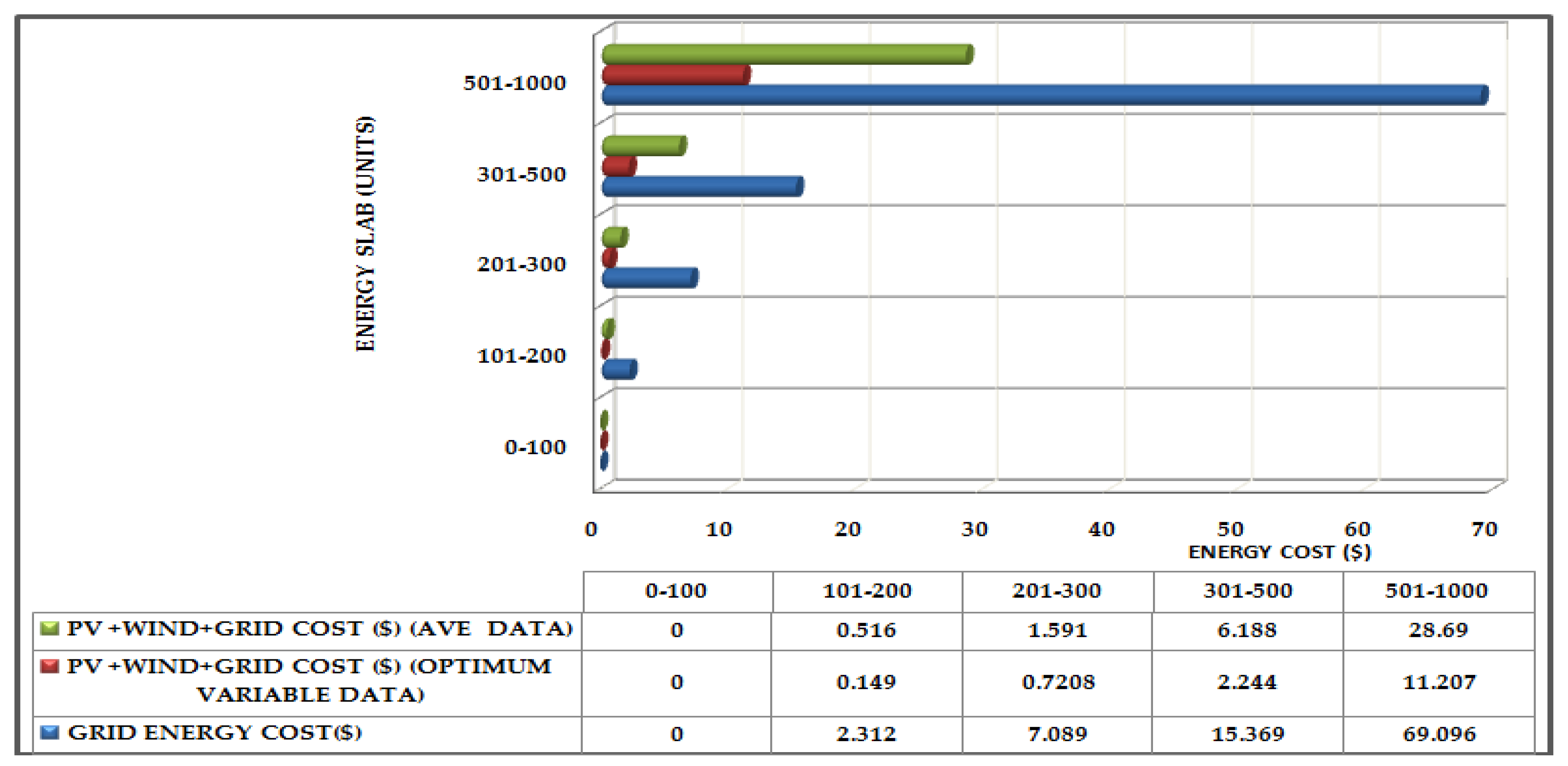
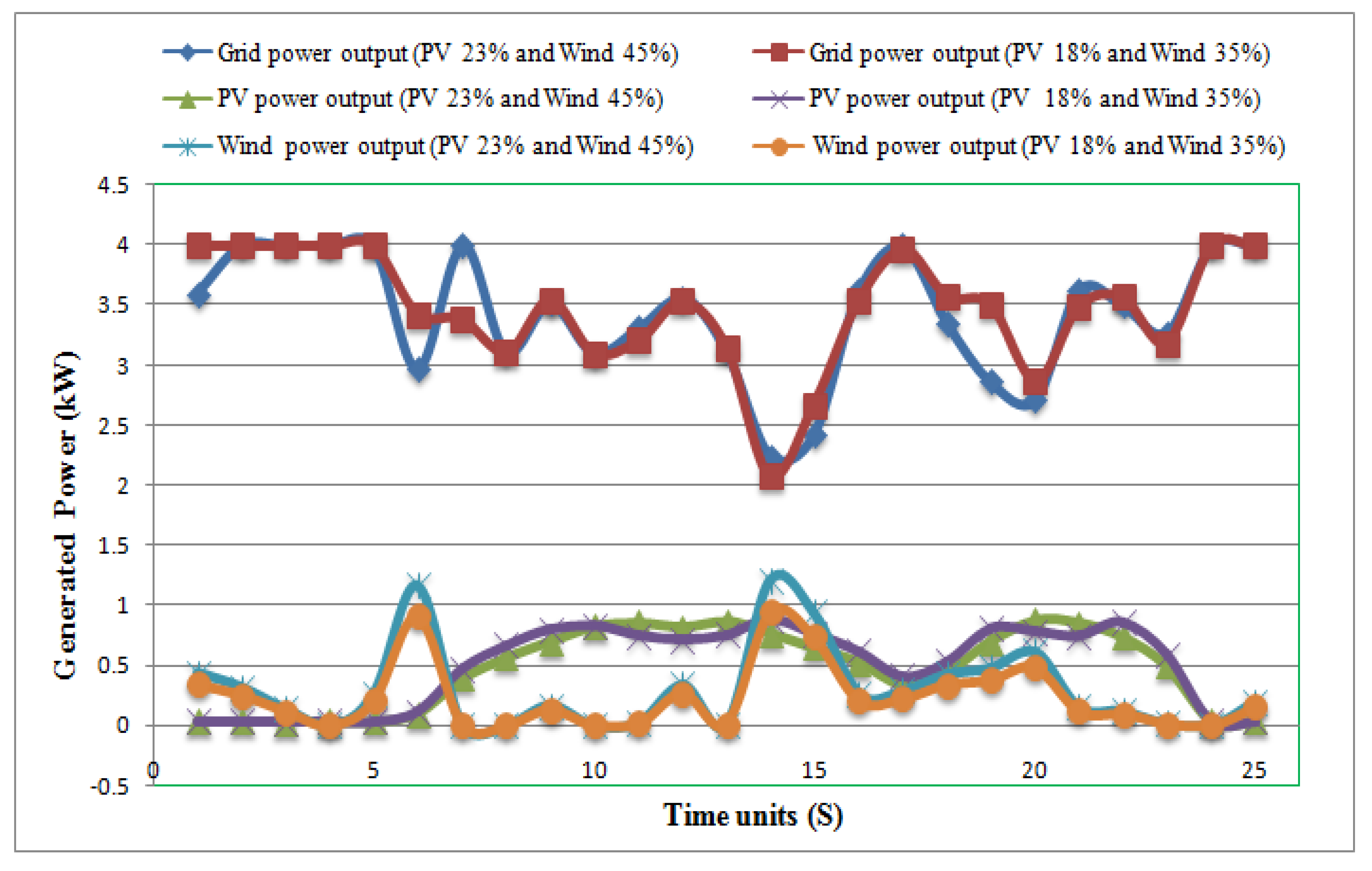
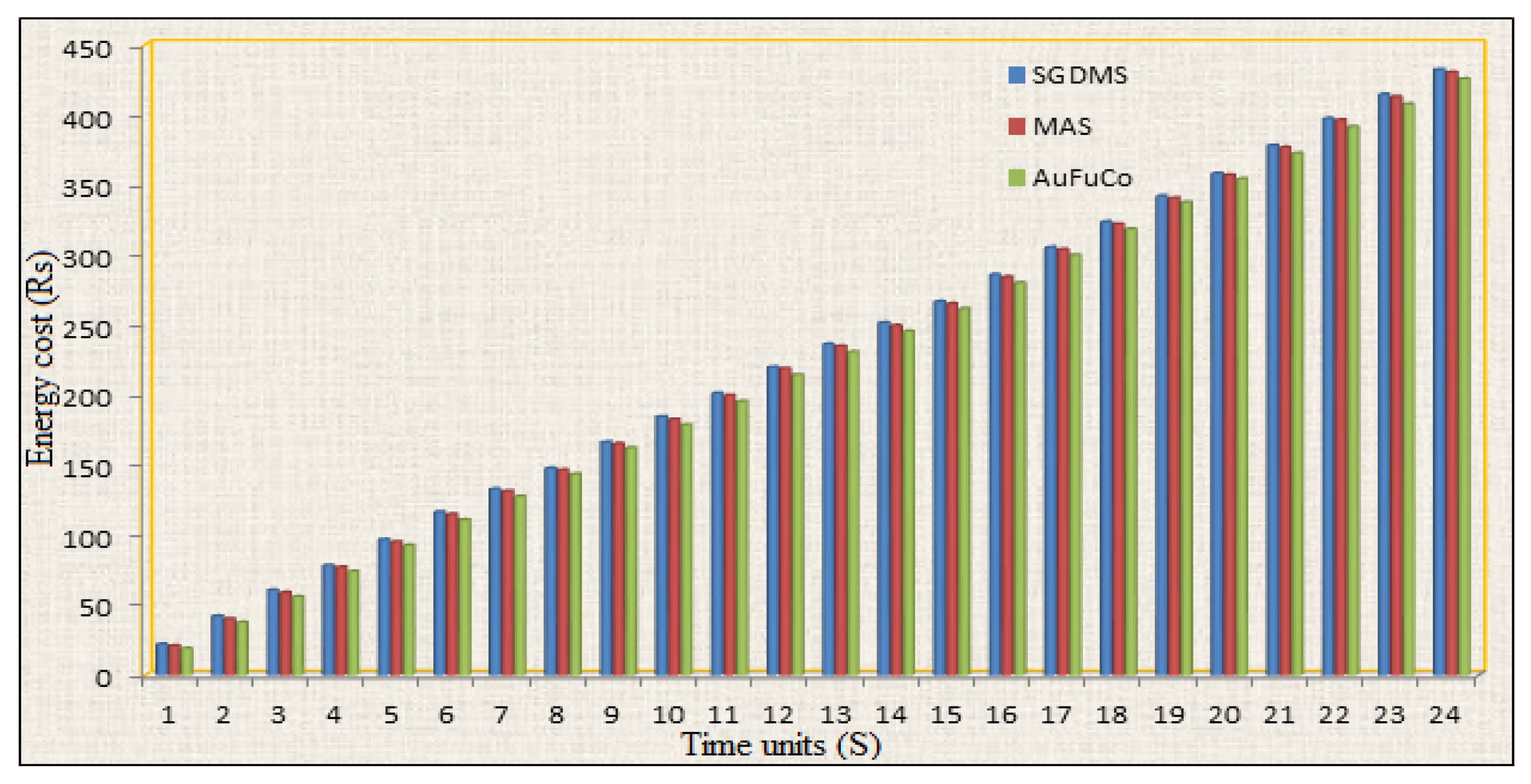
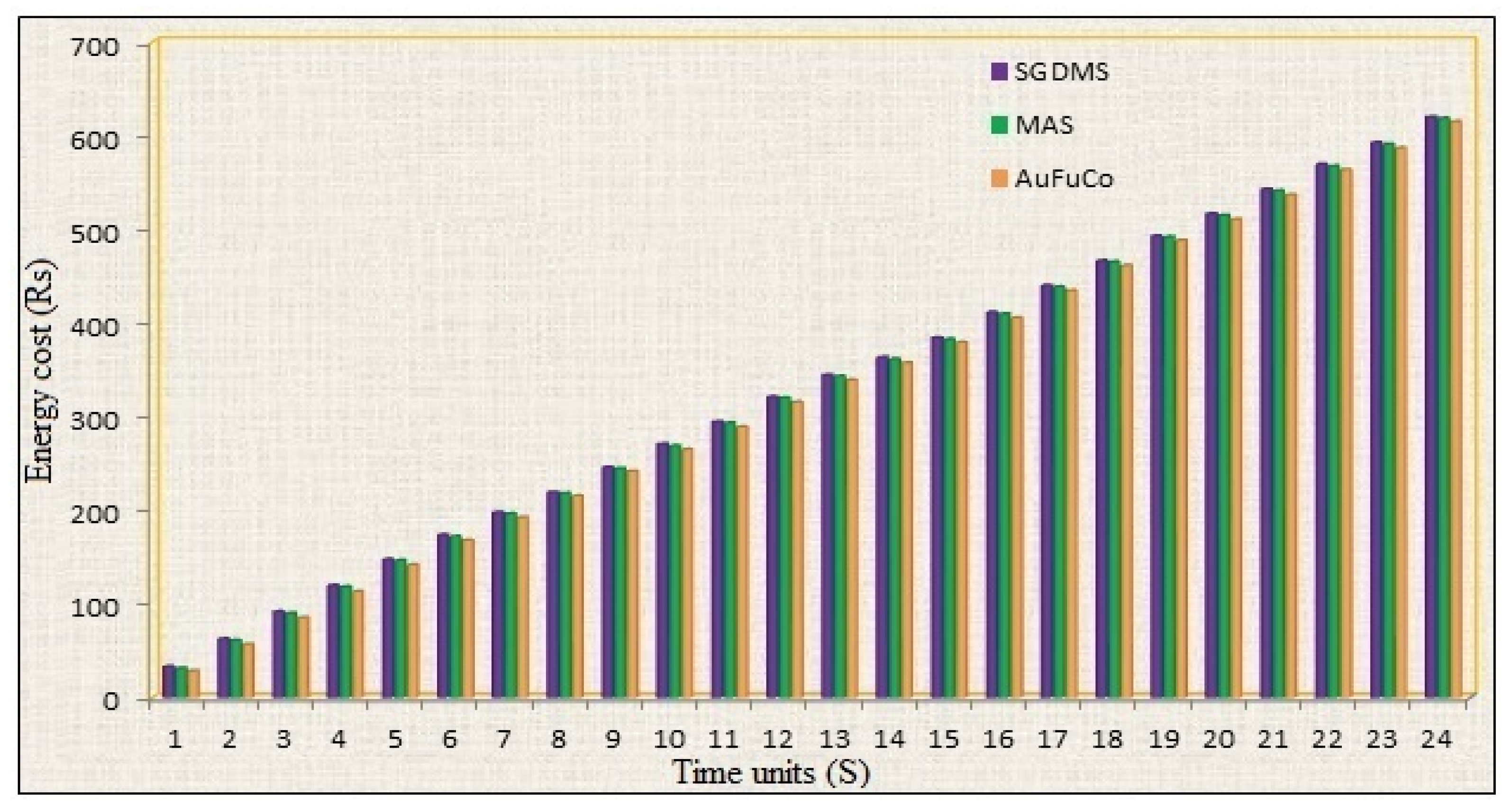
| Method Adopted | Inferences |
|---|---|
| Fuzzy controller with decision boundaries. | Presented a flexible allocation strategy based on a two-stage fuzzy logic controller to address energy management and cost control [18]. |
| Reconfigurable MPPT fuzzy controller. | Proposed adoption of a fuzzy logic system in the actual implementation of the MPPT controller. Was tested under various environmental limitations [19]. |
| Fuzzy-DEcision-MAking Trial and Evaluation Laboratory (F-DEMATEL). | An integrated model for determining the best locations for sustainable biomass plants were established. The optimal locations for biomass plants were demonstrated to be those near forested areas to ensure low transport costs [20]. |
| Home renewable energy management system (HIHREM) | Proposed a hybridized intelligent home renewable energy management system (HIHREM) that integrates solar energy and energy storage services and a smart home is designed based on the demand response. The energy consumption rate is reduced significantly, specifically during high-demand periods [21]. |
| Fuzzy based Hybrid Optimization Model for Electric Renewable | Applied the fuzzy logic rule in the Hybrid Optimization Model for Electric Renewables (HOMER) software for an analytical model of solar, wind, and hydropower, which are merged with cost criteria to form an objective function [22]. |
| Bio-inspired firefly optimizer | Reported a hybrid wind speed prediction model with a bio-inspired firefly optimizer algorithm integrated with a multilayer perceptron [23]. |
| A multi-agent system (MAS) | Presented a smart grid distribution management system (SGDMS) for contestable and non-contestable consumers. Multi-agent system (MAS) technology reduced the electricity price of consumers but foresting prices are not presented [24]. |
| Integrated energy management system | Reported an integrated energy management system (EMS) with PV, an electric vehicle, a battery, and thermal power storage devices with complex forecasting [25]. |
| Artificial bee colony (ABC) | Implemented an artificial bee colony (ABC) as an optimizer to improve the HEMS but cost optimization concepts are not incorporated [26]. |
| Intelligent energy management system | A suggested intelligent energy management system that finds the optimal energy efficiency to maximize energy usage. However, energy forecasting and cost optimizations are not presented [27]. |
| Energy controller system | An implemented energy controller system to control household appliances such as air conditioners and lighting. The concepts of cost optimization with hybrid renewable sources are not incorporated [28]. |
| Levelized cost function | Suggested Levelized cost of systems for electricity generation and reported that the cost can be reduced considerably with increased renewable energy penetration at no extra cost. However, individual energy and forecasting prices are not discussed greatly [29]. |
| PV Inputs | Wind Power Inputs | ||
|---|---|---|---|
| Reference Temperature (Tref in °C) | 25.00 | Cut in speed (m/s) | 2.00 |
| Operating Temperature range (Top in °C) | 25.00–50.00 | Cut out speed (m/s) | 24.00 |
| Solar Radiation variations (puW/m2) | 0.25–1.09 | Wind speed variations (m/s) | 0.00–24.00 |
| PV Power variation (kWP) | 0.00–2.00 | Wind Power variation (kW) | 0.00–2.00 |
| Base Load | Priority Load | ||||
| Appliance Name | Numbers & individual Ratings (kW) | Power Ratings (kW) | Appliance Name | Numbers & Individual Ratings (kW) | Power Ratings (kW) |
| Refrigerator | 1 (0.50) | 0.50 | Air conditioning | 1 (1.50) | 1.50 |
| Lights | 5 (0.04) | 0.20 | |||
| Fan | 3 (0.08) | 0.24 | Heating load | 1 (0.50) | 0.50 |
| Television | 1 (0.15) | 0.15 | |||
| Computers | 1 (0.15) | 0.15 | |||
| Total power (kW) | 1.24 | Total power (kW) | 2.00 | ||
| Schedulable Load | Short Term or Burst Load | ||||
| Appliance Name | Numbers & Individual Ratings (kW) | Power Ratings (kW) | Appliance Name | Numbers &Individual Ratings (kW) | Power Ratings (kW) |
| Washing machine | 1 (0.50) | 0.50 | Mixer | 1 (0.50) | 0.50 |
| Wet grinder | 1 (0.40) | 0.40 | Pump motor | 1 (0.50) | 0.50 |
| Iron box | 1 (0.50) | 0.50 | Induction stove | 1 (1.00) | 1.00 |
| Total power (kW) | 1.40 | Total power (kW) | 2.00 | ||
| Energy Combinations | PV and Grid | Wind and Grid | PV, Wind, and Grid | Grid Supply | ||||
|---|---|---|---|---|---|---|---|---|
| Energy (kWh) | Cost (USD) | Energy (kWh) | Cost (USD) | Energy (kWh) | Cost (USD) | Energy (kWh) | Cost (USD) | |
| PV (EPV,t) | 13.23 | −0.55 | 0 | 0 | 13.23 | −0.55 | 0 | 0 |
| Wind (Ewind,t) | 0 | 0 | 14.10 | −0.51 | 14.10 | −0.51 | 0 | 0 |
| Grid (Egrid,t) | 76.80 | 4.70 | 85.90 | 5.25 | 62.67 | 3.83 | 96.04 | 5.87 |
| Total (EtR) | 90.03 | 4.15 | 99.22 | 4.74 | 90.00 | 2.77 | 96.04 | 5.87 |
| S. No. | Energy Block | Energy Cost /Unit |
|---|---|---|
| 1 | 0–100 units (bimonthly) | 0.034 USD/unit and no Fixed charges [No Energy bill scheme] |
| 2 | 101–200 units (bimonthly) | 0.048 USD/unit and fixed charges 0.410 USD/Service |
| 3 | 201–500 units (bimonthly) | 0.063 USD/unit and fixed charges 0.540 USD/Service |
| 4 | Above 501 units (bimonthly) till 1000 units | 0.090 USD/unit and fixed charges 0.680 USD/Service |
| Energy Block (kWh) | Wind Energy (kWh) | PV Energy (kWh) | Grid Energy (kWh) | Total Energy (kWh) | ||||
|---|---|---|---|---|---|---|---|---|
| Optimum | Average | Optimum | Average | Optimum | Average | Optimum | Average | |
| 0–100 | 15.36 | 17.35 | 12.90 | 13.20 | 71.46 | 72.70 | 99.72 | 103.25 |
| 101–200 | 31.11 | 34.70 | 26.38 | 26.70 | 143.20 | 138.60 | 200.69 | 200.60 |
| 201–300 | 43.80 | 52.05 | 39.58 | 40.30 | 216.90 | 207.70 | 300.28 | 300.80 |
| 301–500 | 76.40 | 86.60 | 66.20 | 69.20 | 357.40 | 344.20 | 500.00 | 513.20 |
| 501–1000 | 161.80 | 175.10 | 142.10 | 130.20 | 709.40 | 703.90 | 1013.30 | 1000.90 |
| Source Combinations | Controller | Wind Power Cost (USD) | PV Power Cost (USD) | Grid Power Cost (USD) | Total Cost (USD) |
|---|---|---|---|---|---|
| Wind 45% and PV 23% efficiency | SGDMS | 0.28 | 0.50 | 5.04 | 5.82 |
| MAS | 0.27 | 0.49 | 5.02 | 5.78 | |
| AuFuCO | 0.27 | 0.49 | 5.00 | 5.76 | |
| Wind 35% and PV 18% efficiency | SGDMS | 0.22 | 0.52 | 5.09 | 5.83 |
| MAS | 0.22 | 0.52 | 5.08 | 5.81 | |
| AuFuCO | 0.21 | 0.51 | 5.07 | 5.78 |
| Time Units (S) | Forecasted Energy (Units) | Generated Energy (Units) | Consumed Energy (Units) | Grid Power (kW) | PV Power (kW) | Wind Power (kW) | Energy Cost at Present (USD) | Energy Cost by 2030 (USD) | ||||
|---|---|---|---|---|---|---|---|---|---|---|---|---|
| Wind (USD) | PV (USD) | Total (USD) | PV (USD) | Wind (USD) | Total (USD) | |||||||
| 1 | 3.5000 | 3.7000 | 1.8000 | 3.2000 | 0 | 0.7000 | 0.0126 | 0.0014 | 0.2660 | 0.0328 | 0.0041 | 1.1767 |
| 2 | 8.8000 | 7.6000 | 3.7000 | 4.0000 | 0 | 0.3000 | 0.0224 | 0.0028 | 0.5278 | 0.0574 | 0.0041 | 2.3452 |
| 3 | 12.7000 | 11.9000 | 5.5000 | 4.0000 | 0 | 0 | 0.0266 | 0.0042 | 0.7840 | 0.0656 | 0.0082 | 3.5014 |
| 4 | 15.6000 | 15.9000 | 8.3000 | 3.2000 | 0 | 0.6000 | 0.0266 | 0.0056 | 1.0374 | 0.0656 | 0.0082 | 4.6494 |
| 5 | 20.9000 | 19.7000 | 11.2000 | 4.0000 | 0 | 2.4000 | 0.0336 | 0.007 | 1.2978 | 0.0861 | 0.0123 | 5.8138 |
| 6 | 26.9000 | 26.1000 | 15.7000 | 1.8000 | 1.800 | 0 | 0.0672 | 0.0112 | 1.5526 | 0.1722 | 0.0205 | 6.8880 |
| 7 | 31.0000 | 29.7000 | 20.2000 | 0.6000 | 1.900 | 0 | 0.0672 | 0.0322 | 1.7864 | 0.1722 | 0.0574 | 7.8925 |
| 8 | 35.1000 | 32.2000 | 24.7000 | 2.1000 | 1.900 | 0.3000 | 0.0672 | 0.0602 | 2.0104 | 0.1722 | 0.1107 | 8.8314 |
| 9 | 40.3000 | 36.6000 | 29.2000 | 0.5000 | 1.900 | 0 | 0.0728 | 0.0938 | 2.2722 | 0.1845 | 0.1722 | 9.9179 |
| 10 | 44.4000 | 39.1000 | 33.7000 | 1.5000 | 1.900 | 0 | 0.0728 | 0.1302 | 2.5032 | 0.1845 | 0.2378 | 10.8690 |
| 11 | 47.3000 | 42.6000 | 38.2000 | 2.2000 | 1.800 | 0.7000 | 0.0728 | 0.1624 | 2.7370 | 0.1845 | 0.2952 | 11.8490 |
| 12 | 50.1000 | 47.3000 | 42.7000 | 1.0000 | 2.000 | 0 | 0.0826 | 0.1918 | 3.0002 | 0.2091 | 0.3526 | 12.9390 |
| 13 | 52.9000 | 50.3000 | 47.2000 | 4.0000 | 2.000 | 2.5000 | 0.0826 | 0.2254 | 3.2312 | 0.2132 | 0.4100 | 13.9010 |
| 14 | 56.7000 | 56.9000 | 51.7000 | 1.0000 | 2.000 | 2.0000 | 0.1176 | 0.2618 | 3.4356 | 0.2993 | 0.4797 | 14.6540 |
| 15 | 59.6000 | 59.8000 | 56.2000 | 1.7000 | 1.900 | 0.6000 | 0.1456 | 0.2954 | 3.6624 | 0.3690 | 0.5371 | 15.5420 |
| 16 | 62.5000 | 64.1000 | 60.7000 | 2.0000 | 1.900 | 0.6000 | 0.1526 | 0.3206 | 3.9200 | 0.3895 | 0.5863 | 16.6250 |
| 17 | 67.8000 | 68.5000 | 65.2000 | 3.0000 | 1.900 | 0.9000 | 0.1610 | 0.3388 | 4.1958 | 0.4100 | 0.6191 | 17.8150 |
| 18 | 73.2000 | 72.4000 | 69.7000 | 2.5000 | 1.800 | 1.0000 | 0.1736 | 0.3612 | 4.4562 | 0.4428 | 0.6601 | 18.9020 |
| 19 | 78.5000 | 75.9000 | 74.2000 | 2.6000 | 0 | 1.3000 | 0.1876 | 0.3962 | 4.7250 | 0.4756 | 0.7216 | 20.0110 |
| 20 | 83.8000 | 79.8000 | 78.7000 | 4.0000 | 0 | 0.3000 | 0.2058 | 0.4298 | 4.9574 | 0.5207 | 0.7831 | 20.9370 |
| 21 | 88.3000 | 84.1000 | 83.2000 | 4.0000 | 0 | 0.3000 | 0.2100 | 0.4606 | 5.2136 | 0.533 | 0.8405 | 22.0080 |
| 22 | 90.2000 | 88.4000 | 87.7000 | 4.0000 | 0 | 0 | 0.2128 | 0.4970 | 5.4782 | 0.5412 | 0.9061 | 23.1050 |
| 23 | 91.9000 | 92.4000 | 92.2000 | 4.0000 | 0 | 0 | 0.2142 | 0.5236 | 5.7050 | 0.5453 | 0.9553 | 24.0690 |
| 24 | 94.7000 | 96.4000 | 96.1000 | 3.9000 | 0 | 0.4000 | 0.2142 | 0.5250 | 5.9570 | 0.5453 | 0.9553 | 25.2190 |
Publisher’s Note: MDPI stays neutral with regard to jurisdictional claims in published maps and institutional affiliations. |
© 2021 by the authors. Licensee MDPI, Basel, Switzerland. This article is an open access article distributed under the terms and conditions of the Creative Commons Attribution (CC BY) license (https://creativecommons.org/licenses/by/4.0/).
Share and Cite
Anthony, M.; Prasad, V.; Kannadasan, R.; Mekhilef, S.; Alsharif, M.H.; Kim, M.-K.; Jahid, A.; Aly, A.A. Autonomous Fuzzy Controller Design for the Utilization of Hybrid PV-Wind Energy Resources in Demand Side Management Environment. Electronics 2021, 10, 1618. https://doi.org/10.3390/electronics10141618
Anthony M, Prasad V, Kannadasan R, Mekhilef S, Alsharif MH, Kim M-K, Jahid A, Aly AA. Autonomous Fuzzy Controller Design for the Utilization of Hybrid PV-Wind Energy Resources in Demand Side Management Environment. Electronics. 2021; 10(14):1618. https://doi.org/10.3390/electronics10141618
Chicago/Turabian StyleAnthony, Mohanasundaram, Valsalal Prasad, Raju Kannadasan, Saad Mekhilef, Mohammed H. Alsharif, Mun-Kyeom Kim, Abu Jahid, and Ayman A. Aly. 2021. "Autonomous Fuzzy Controller Design for the Utilization of Hybrid PV-Wind Energy Resources in Demand Side Management Environment" Electronics 10, no. 14: 1618. https://doi.org/10.3390/electronics10141618










